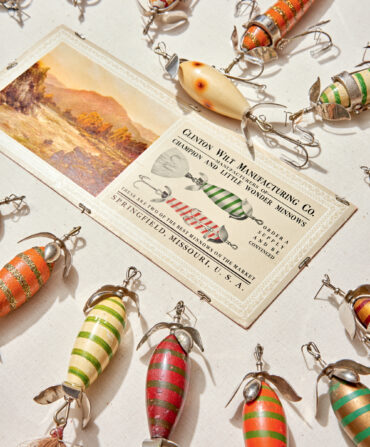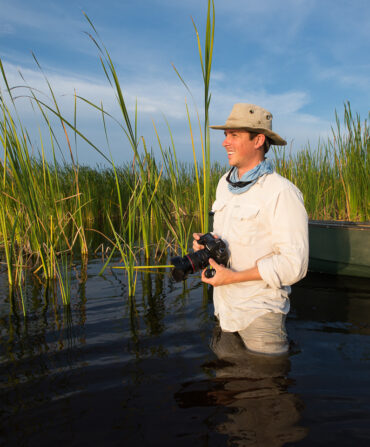
A student of the master South Carolina blade maker George Herron, Larry Page of Page Custom Knives (photo at top) first put steel to belt grinder in 1983. The maple-burl-handled Model 1A, made in his Aiken workshop, is an all-purpose workhorse, with a four-inch blade that can breast a turkey as well as it slices through a wedge of cheddar back at camp ($250; pagecustomknives.com).

Look Sharp: (Left to right)
Sam Stoner’s methods may be primitive—at his Scottsville, Kentucky, Outback Forge workshop, he uses grinding equipment powered by horses and a hand-cranked coal forge—but the results are anything but, as his carbon- fiber-handled 31⁄8-inch skinner shows ($195; adamsknifeworks.com).
You’d be hard-pressed to find a more useful tool to keep in your pocket than a well-made folder like the elegant Saddlehorn by Doc Hagen Custom Knives. With dual blades, it can handle a variety of tasks ($450; dochagencustomknives.com).
In 1960, NASA commissioned Randall Made Knives to manufacture survival knives for the first manned spaceflight. The Model 10 fillet knife belongs on a boat, where its seven-inch blade is perfect for cleaning hefty saltwater fish ($245; randallknives.com).

High Flying: (Left to Right)
Hollifield Bamboo’s rods are tailored to the North Carolina creeks John Hollifield learned to fish as a boy. His seven-foot-nine-inch four-weight is nimble enough to shoot dry flies to brook trout on laurel-lined streams but has sufficient backbone to pull rainbows out of wider waters. It’s good-looking, too, with a rattan grip and hand-cut engravings. Since even the finest rod can get snapped by a car door, Hollifield includes an extra tip, plus an aluminum tube and a leather bag ($5,600 as shown; hollifieldbamboo.com).
All the expertise in the world doesn’t matter if you don’t land the fish. That’s where a good net comes in, and few are better—or better-looking—than Greg Madrigal’s Sierra Nets. His custom Transpacific marries premium woodwork (the hoop is salvaged mahogany) with everyday practicality ($695 as shown; sierra-nets.com).

Foot Patrol: (Top to Bottom)
The Rancourt & Company Pamola boot doubles up on durability: near-indestructible hand-waxed leather on the outside, a horsehide lining inside for extra structural support ($395; rancourtandcompany.com).
The Clarence boot comes with a field-proven pedigree. It’s a new iteration of Wolverine’s classic 1,000 Mile boot, first introduced in 1914. Only now, thanks to a lighter, more flexible lug sole, you can cover more ground more comfortably ($200; orvis.com).
Texas-based J. B. Hill specializes in cowboy boots cut, sewn, and heeled by hand. The Sonoma Lite Vintage boot slips smoothly in and out of stirrups on horseback hunts but wouldn’t be out of place at a tailgate either ($1,290; jbhilltexas.com).
 Outer Layer:
Outer Layer:
When it came time to name his new sporting apparel company, Radcliff Menge took inspiration from the place where he grew up hunting: the Tombigbee River in western Alabama. To date, Tom Beckbe offers just one item, the Tensaw Jacket, but Menge makes it count with a waxed-cotton shell tough enough to endure the gnarliest thicket. The lining is another nod to his roots—it’s dyed with Alabama red clay ($495; tombeckbe.com).







